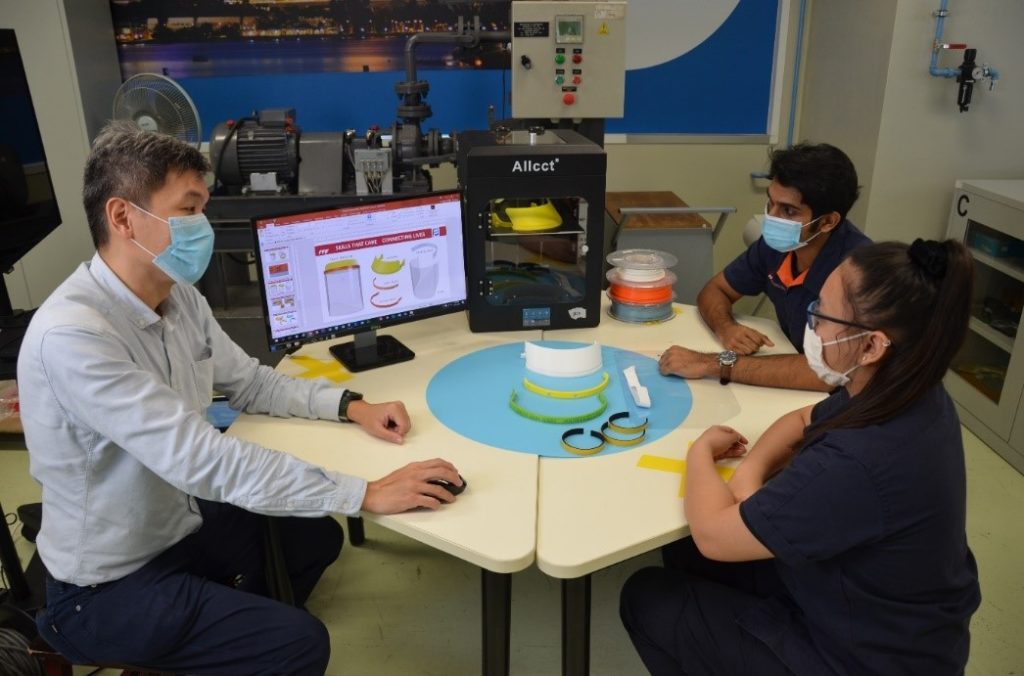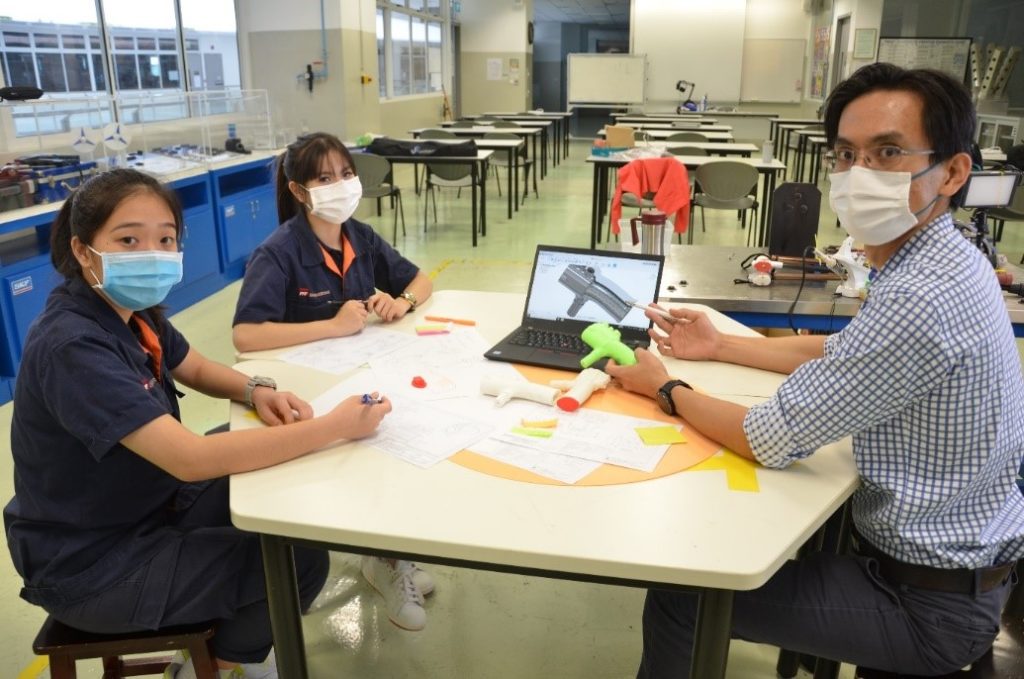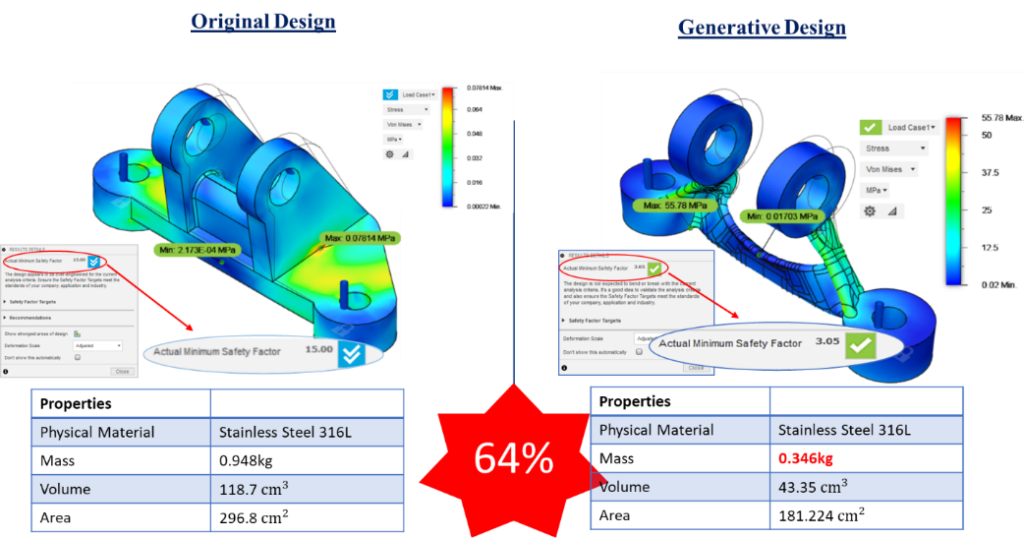By Jennifer Nockels (3 November 2020)
At Autodesk, we make software for people who make things, helping people to create incredible designs that support their communities and have a positive impact on the environment and those around them.
Recently, we did exactly that – working with students in Singapore’s Institute of Technical Education (ITE) and Malaysia’s Smart Manufacturing Research Institute (SMRI) at Universiti Teknologi MARA (UiTM), using generative design to create innovative products that support the local community and improve the design process.
Generative design – a technology exclusively available in Fusion 360 – is an artificial intelligence (AI) cloud-based software that uses algorithms and cloud computing to allow designers to explore a larger number of design options far more rapidly than has been conceivable in the past. Users simply define their design problem through parameters such as materials, manufacturing methods, and cost constraints, and the software produces a set of solutions that meets those criteria.
We’re excited to show you highlights of the projects by ITE and SMRI at UiTM.
ITE projects selected for President’s Challenge 2020 in Singapore
Initiated by former President S R Nathan in 2000, the President’s Challenge in Singapore represents the coming together of people from all walks of life to help the less fortunate. The challenge also supports digital inclusion of vulnerable groups. In support of the President’s Challenge 2020, a team of ITE students and lecturers partnered with Autodesk in initiating two projects using generative design: a face shield and a smart walking cane. During the start of the COVID-19 outbreak, the ITE team learned that nursing homes and their elderly patients were going through a difficult time. The team designed a smart walking cane that can detect and warn elderly users of wet surfaces, while the reusable face shields keep elderly patients and their nursing home staff safe.

ITE staff guiding students on designing and fabricating the face shield.
During the circuit breaker –a period of tougher restrictions during COVID-19 – ITE students and lecturers transitioned to home-based learning where they collaborated using cloud-based Fusion 360. The students leveraged generative design, which accelerates the design-to-make process by creating multiple design options, testing and learning from each iteration. GD helped the ITE team reduce the amount of materials and 3D-printing time to achieve their goal of driving impact in their local community as quickly as possible in a time where these devices proved most useful.
Autodesk was one of ITE’s sponsors for this important project, contributing training, software, and design expertise. All donations raised via ITE’s campaign page will be channelled to the benefitting organisations across various sectors, including children with special needs, persons with disabilities and the elderly. This video of the campaign features ITE students discussing the project, giving insight into the inspiration behind their designs.
Koh Hock Tong, a section head at ITE College Central, said, “Our ITE staff and students are excited to work with Autodesk in implementing advanced technologies, such as generative design into our projects. We are grateful to have the support of the Autodesk team.”
Serene Sia, ASEAN Managing Director of Autodesk Sales, said this is a great example of how innovation in design technology can support communities. “Generative design has the ability to produce a solution that previously could not be conceived. Instead of concentrating on mastering a tool, you’re focusing on mastering the problem and you’re letting the computer do all the work. This means the human user can focus on the bigger picture, including solving the design problem and thinking about the environmental impact.”

ITE staff guiding students on designing and fabricating the walking cane.
SMRI at UiTM adopts Autodesk technologies and incorporates generative design into curriculum in Malaysia
Generative design is a fairly new concept in Malaysia, and at SMRI UiTM in Shah Alam, a group of lecturers from SMRI have recently integrated GD into its curriculum for the first time. Specifically, a team of UiTM lecturers, researchers, and students are using generative design in an aerospace bracket project, an important component in aircraft structures. The UiTM team found that GD reduced the weight and materials of the aerospace bracket by approximately 60-65% while maintaining the desired safety factors of the component. This has created efficiencies contributing to the sustainability of the designs, processes, and materials.
Led by Professor Ir. Ts. Dr. Yupiter HP Manurung, the SMRI UiTM team is excited to continue in exploring the use of generative design and is hoping to expand to other sectors that can benefit from the use of GD, including the automotive and biomedical sectors.

Using generative design, the SMRI UiTM team reduced the weight and materials of the aerospace bracket project by 64%.
Generative design is helping to redefine what’s possible in the process of not only design and manufacturing, but also in architecture, engineering, and construction. With educational centres increasingly embracing advanced technologies, we are excited to see more innovations from future generations of designers that help create a positive and sustainable impact on their communities.

(0)